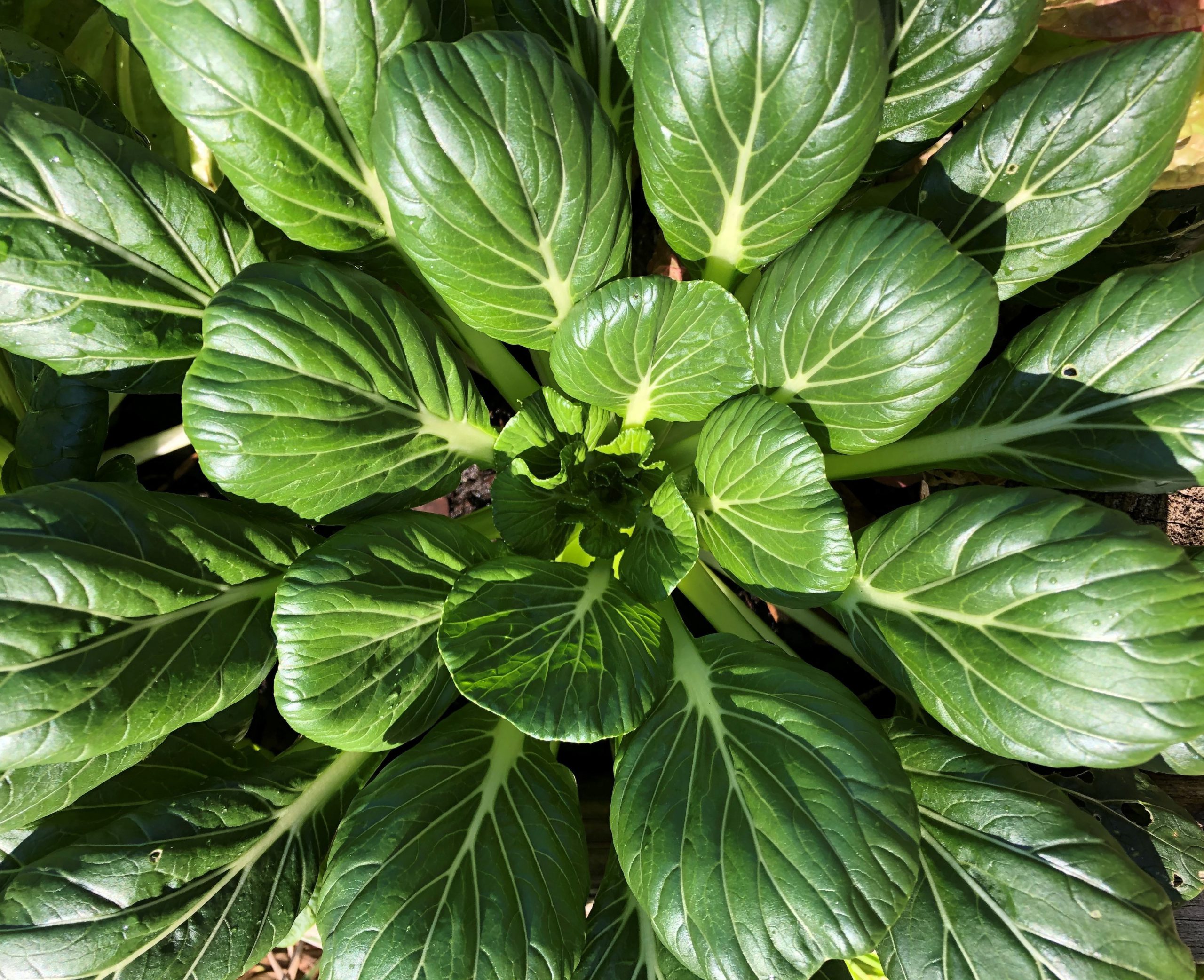Sweet to the palate, easy to grow, and a delight to watch take shape, tatsoi is a great choice for your fall and winter veggie garden.
Tatsoi is in the cabbage family, species Brassica rapa, and is closely related to another Asian green, bok choy. It originates in Japan, where it has been grown for over 1,500 years.
Tatsoi is an annual with spoon-like dark-green leaves and cream-colored stems that grows low to the ground. It is easy to start from seed, can handle partial shade, and grows relatively fast. It can be eaten raw, like spinach, or it can be lightly cooked to add a pleasantly distinct flavor to stir-fries and soups. It has a surprisingly mild mustard-like taste. It is full of vitamin C, calcium, potassium, folate, and phytonutrients.
Although it does well in the spring in cooler climates, it does best in fall and winter in Florida and can handle temperatures down to 15°F. It can be directly seeded into the garden and germinates in about five to 15 days. You can seed tatsoi one to three inches apart, but it should be thinned to about eight to 10 inches to reach full size, which takes about 40 to 50 days. Add the baby tatsoi you thin to your dinner salad.
Once thinned, harvest whole mature plants or individual outer leaves. If you find you just can’t get enough, seed more tatsoi every two weeks until the spring, when longer days and warmer temperatures will cause tatsoi to bolt. Bolting is when a plant diverts its resources away from the edible leaves and into the flowering stem for seed production.
For a truly continuous supply, allow your tatsoi to bolt, and it will produce many tiny, thin seed pods. Wait for the plant to dry completely and harvest the seed pods. Carefully open the pods over a plate to be sure to catch all the small round seeds within. Then, simply store the seeds in a dry, cool location, such as your fridge, in an air-tight container. Stored correctly, the seeds will last four to five years.
If you have yet to give tatsoi a position in your garden, give it a try this winter!
- Cool Season Annual Herbs to Plant in December - December 11, 2025
- The Dirt on Compost: Hot and Worm Composting at Home - October 30, 2025
- Fall Gardening Spotlight: Collard Greens - October 3, 2025


